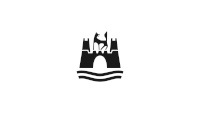Alternative Green Route
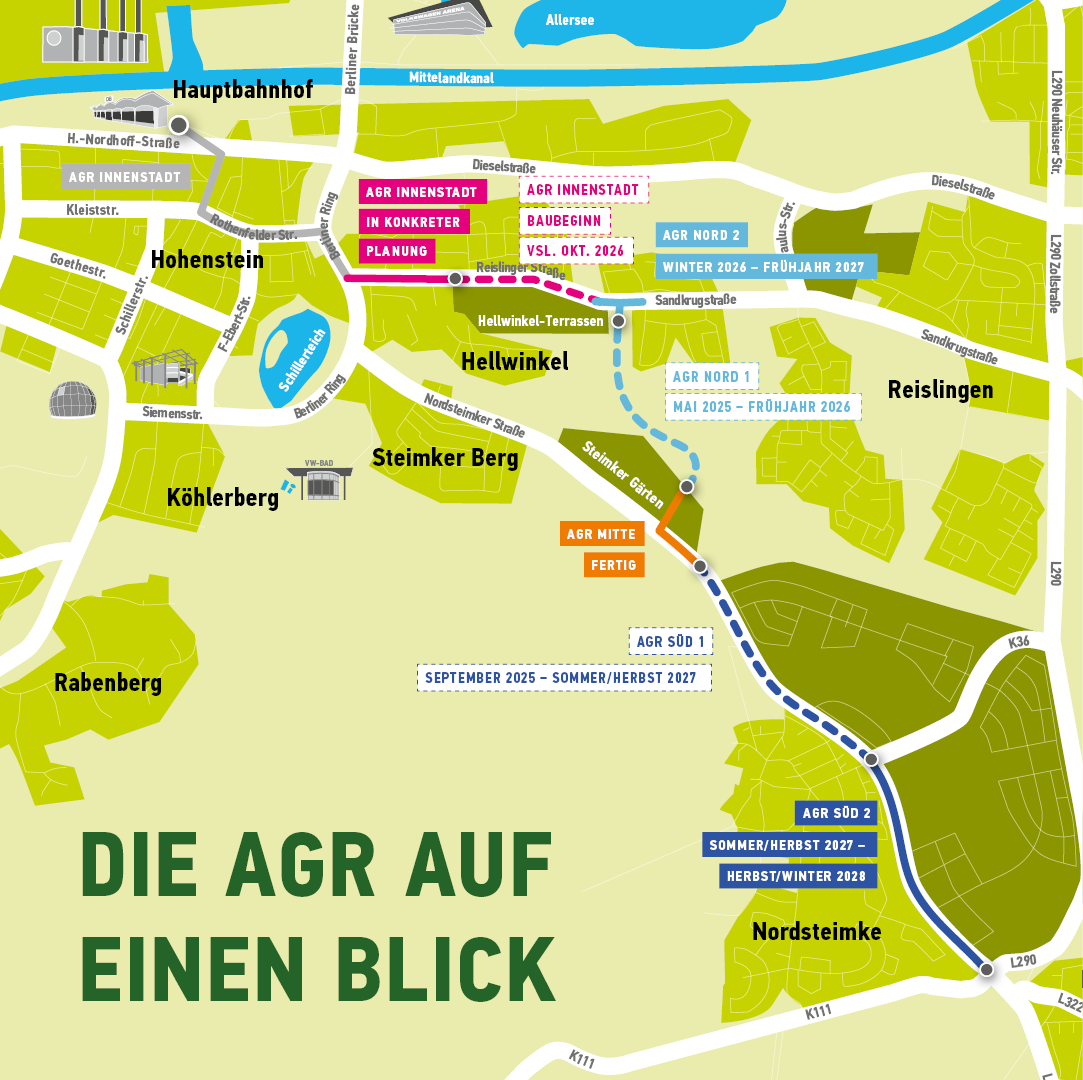
The city is reacting to the increasing volume of traffic in the south of Wolfsburg - mainly caused by the new residential areas such as "Sonnenkamp". The majority of journeys that start in the residential area have the city center and the VW plant as their destination; and usually at around the same time. To avoid traffic jams, it is not enough just to widen the roads. That is why the city has opted for a sustainable solution: the Alternative Green Route. It offers local public transport its own fast route, making the switch from car to public transport much more attractive - with shorter journey times and less traffic on the roads. Cycling and walking are also strengthened.
-
News
AGR South
Cycle traffic guidance adaptedOctober 01, 2025
For the work on the southern section of the Alternative Green Route (AGR) between Steimker Gärten and Nordsteimke, the city council has now adapted the route for the detour of cycle traffic. Previously, cycle traffic was routed along Nordsteimker Straße, but from now on cyclists will have to use the Panoramaweg. The reason for this is that a lot of soil is currently being moved on the construction site. The truck journeys required for this have to cross the previous cycle route. With the new detour, there is no longer any risk of cyclists being affected by the construction site traffic. The administration is constantly examining alternatives to the cycle route in order to always be able to offer the best route.
-
Construction phase south (Steimker Gärten to Nordsteimke)
This section of road connects the Steimker Gärten development area with the district of Nordsteimke and is expected to be completed in summer/autumn 2027.
There will be no restrictions for car traffic during the work - it will be diverted along a temporary, parallel two-lane route. During the 2026 summer vacations, car traffic will be diverted via the K36 and L290.Some of the existing cycle paths and footpaths will only be usable to a limited extent during the construction period - but all connections will remain open thanks to the detour.
Our flyer provides you with the relevant information at a glance: Download as PDF now.
We expect the project to be completed in summer/autumn 2027.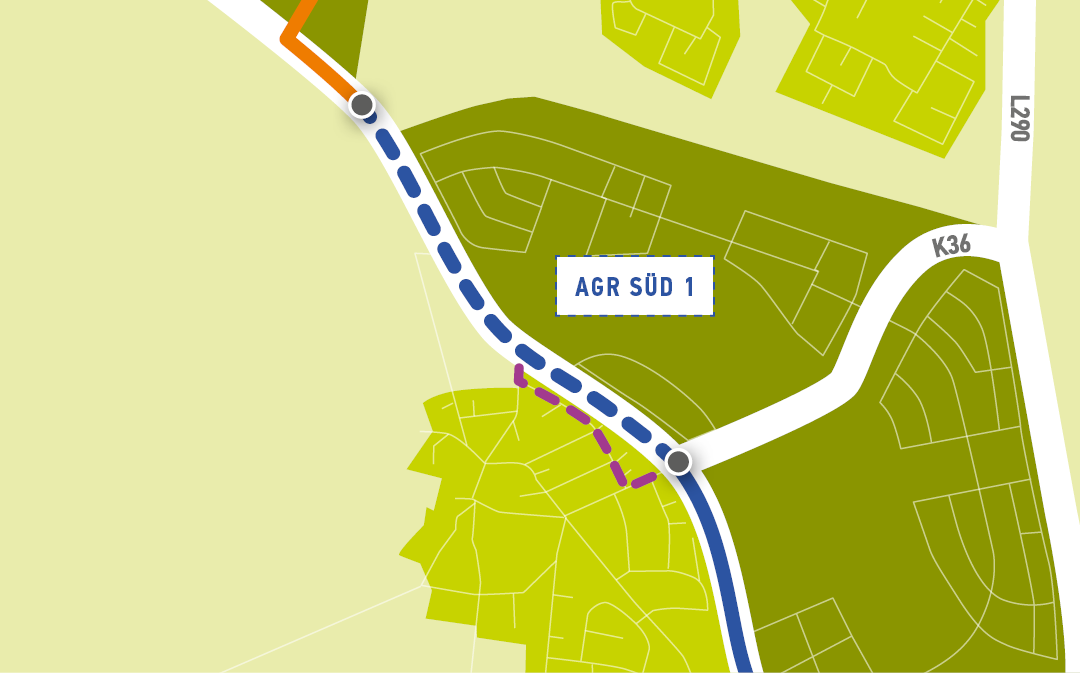
-
Construction phase north (Steimker Gärten to Hellwinkel Terrassen)
The construction process is divided into five stages: securing the construction site, earthworks, road construction, footpaths and cycle paths and lighting systems.
The construction site will be set up from the beginning of May. The supply lines will be identified and exposed. Traffic safety measures will be put in place. In addition, the cycle paths and footpaths will be closed off and cycle and foot traffic diverted accordingly. The earthworks will then begin, during which the topsoil will be removed and the roadside trenches constructed. Finally, the road body will be excavated.
The construction of the AGR is expected to start in mid-September. The asphalt base course, asphalt binder course and asphalt surface course will be laid. The final stage will be the verge work, i.e. the area next to the carriageway.
This will be followed at the end of September by the construction of the footpaths and cycle paths. The kerbs will be laid and then the asphalt surface course and asphalt base course will be installed. Finally, the paving will be laid. Finally, the lighting systems will be installed. Here 35 lanterns will be installed.
Our flyer provides you with the relevant information at a glance: Download as PDF now.
We expect the construction work to be completed in spring 2026.
There will be no restrictions for car traffic in the 1st BA North. Only at the Sandkrugstraße entrance may there be temporary traffic obstructions due to the construction site traffic.
However, the existing footpaths and cycle paths will have to be closed for the construction period. However, a detour will be set up. This will run along Sandkrugstraße, so that the connection between the districts is maintained for all road users.
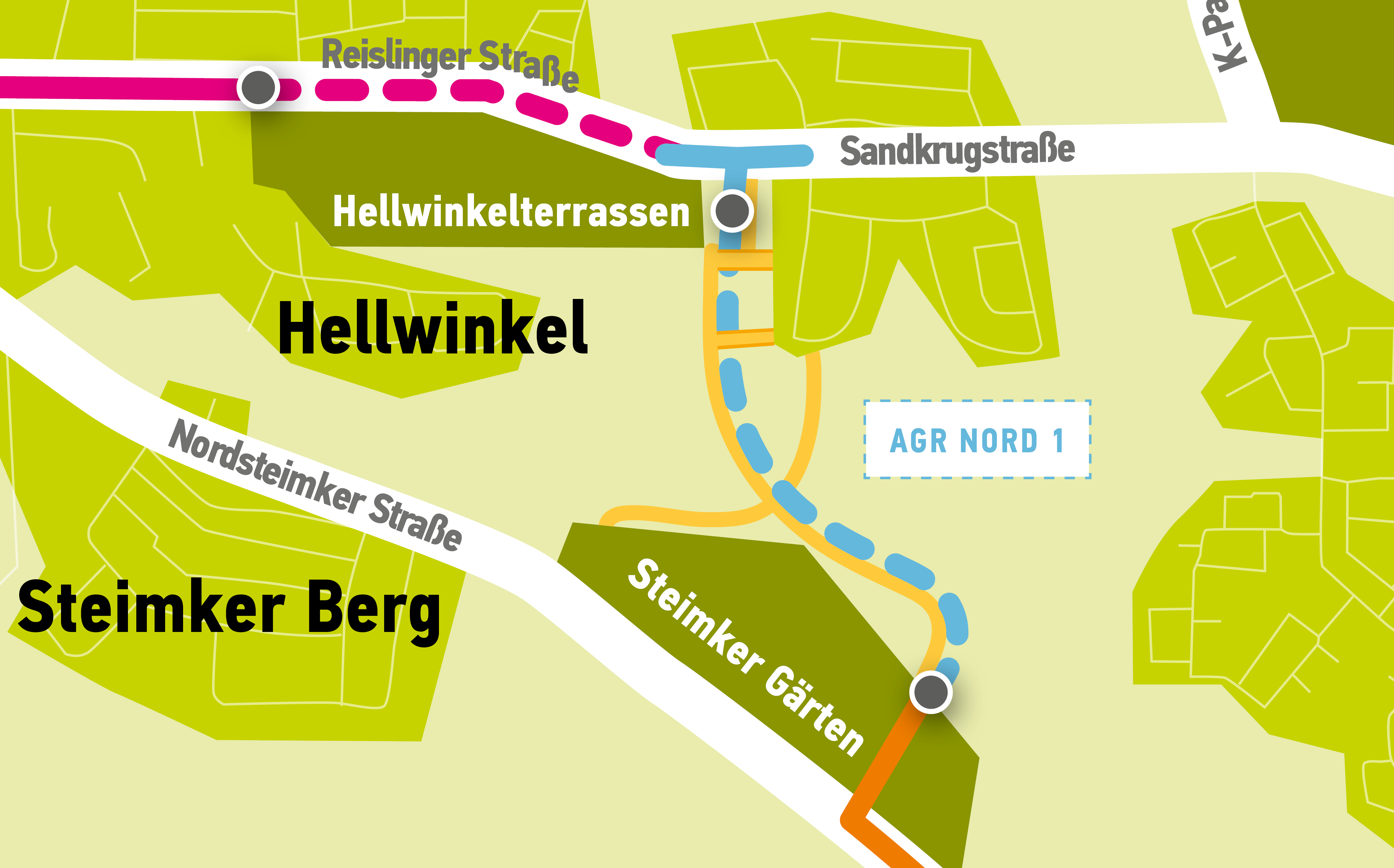
-
Further schedule AGR overall
This is the planning status for the other sections of the AGR. Planning and award procedures are currently underway in key areas, meaning that the timetables only reflect the current planning status and are therefore subject to change. All information is subject to political decisions and commitments from funding bodies.
North 1 section (between Hellwinkel Terrassen and Steimker Gärten): May 2025 to spring 2026
Section North 2 (connection to Sandkrugstraße): Winter 2026 to spring 2027
Central section: Completed
South 1 section (from Steimker Gärten along the K5 to the Steinbeker Straße / K 111 junction): August 2025 to fall 2027
South 2 section (along the K5 to Hehlinger traffic circle): Fall 2027 to winter 2028
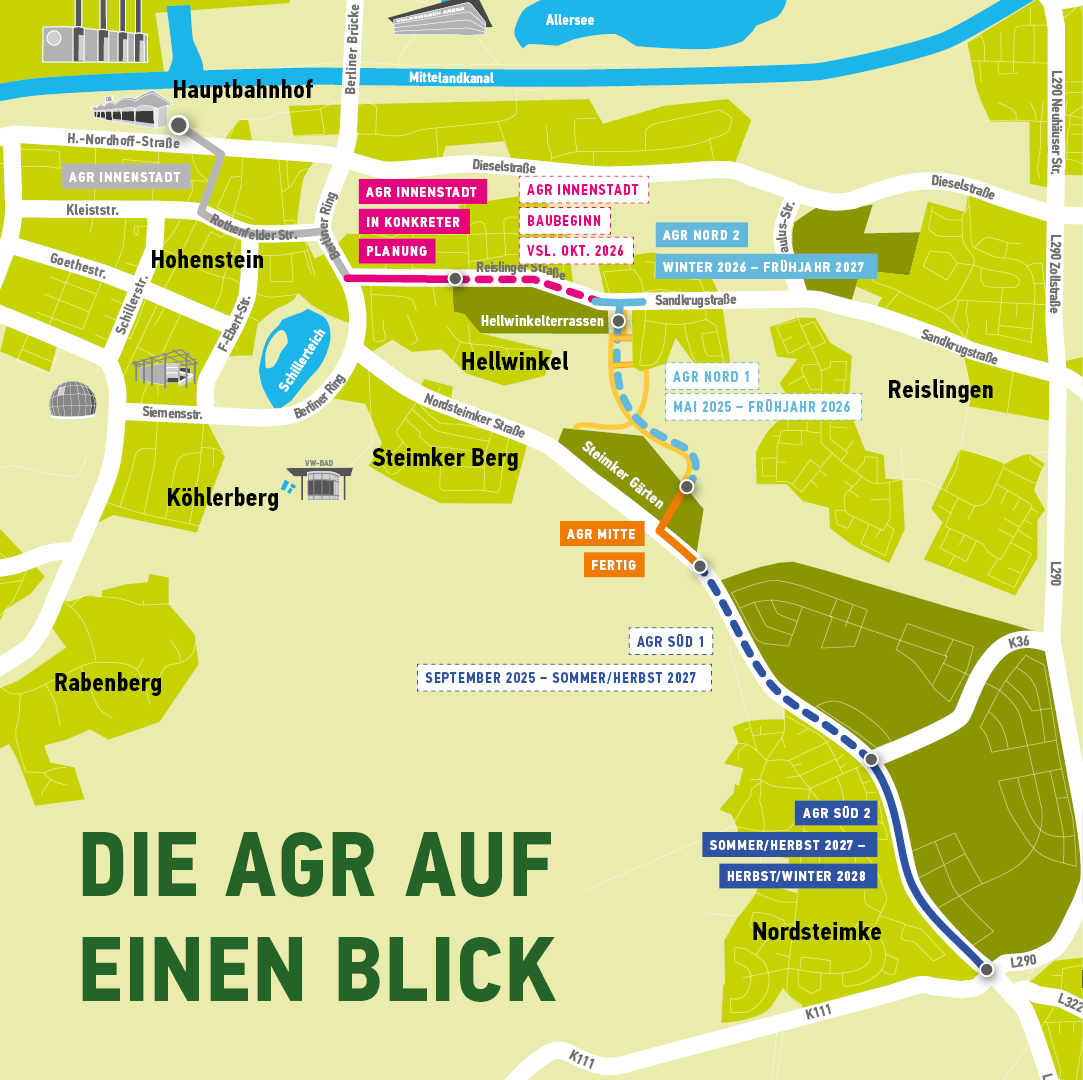
-
FAQs - Frequently Asked Questions
-
What traffic restrictions are there?
There will be no restrictions for car traffic in the 1st construction phase. Only at the Sandkrugstraße entrance may there be temporary traffic obstructions due to the construction site traffic.
However, the existing footpaths and cycle paths will have to be closed for the construction period. However, a detour will be set up. This will lead from Nelkenweg along Sandkrugstraße via Moselstraße, so that the connection between the districts remains open.
-
How loud will the construction noise be?
Unfortunately, construction noise cannot be avoided when building a new road, but it goes without saying that quiet hours will be observed. Night and weekend work and corresponding noise is not to be expected.
-
As a local resident, am I affected in any way?
As this section of the AGR is being built "on a greenfield site", there will be no restrictions on the existing road network. However, it must be expected that footpaths and cycle paths cannot be used as before during the construction period because they will have to be closed. A detour for pedestrians and cyclists will be signposted. On completion, the paths will be usable again in their new form. Residents will also hear that work is being carried out on the construction site. However, the emission limits and rest periods will be observed.
-
Can I still use the paths there, for example to walk my dog or ride my bike?
During the construction period, the existing footpaths and cycle paths in the area cannot be used as they have to be closed. However, a detour will be set up. This will run along Sandkrugstraße and connect Nelkenweg with Moselstraße, so that the connection between the Hellwinkel and Windberg residential areas remains open.
-
Many birds are breeding at the moment and construction is taking place in the middle of nature: What happens to the animals and plants?
In preparation for the construction site, appropriate measures were taken to prevent birds nesting on the ground. This is to ensure that they do not even start to settle in the affected area, but look for another nesting site from the outset. To this end, so-called deterrence measures were carried out, including the use of flutter tape. The area was also searched for existing nests. Compensation areas were created for this in the form of fallow strips.
Replacement planting will be carried out for pruning measures on bushes and shrubs and tree felling that were necessary in connection with the preparation of the construction site.
All measures were coordinated in advance with the responsible environmental authority.
-
What does the measure cost?
The total costs amount to €3.7 million. Of this, €3,515,000 is investment and €185,000 will be recognized in profit or loss. 1.9 million will be drawn from the "R-GVFG" funding program. This leaves the city of Wolfsburg with costs of € 1.9 million to pay.
-
When will the construction site be finished?
We expect the northern section between Steimker Gärten and Hellwinkel Terrassen to be completed in spring 2026.
-
Why does Wolfsburg need the Alternative Green Route?
When it became clear to what extent the existing road infrastructure would have to be adapted in order to continue to handle all traffic predominantly by car, it quickly became clear that it would not be possible to handle traffic by one mode of transport alone. The extent of the expansion, the associated costs and the sealing of land as well as the impact on the environment were disproportionate to the benefits, which compared to the current situation are limited to peak traffic times. In addition, there are negative effects such as noise, exhaust fumes, etc., which of course also increase when there is more car traffic.
The aim of AGR is to offer a good alternative to car traffic by providing a comfortable means of transportation with shorter travel times. AGR is also a better alternative to the car from an environmental point of view. As a result, more people travel to the city center by public transport due to the convenient service. However, it was also taken into account that the absolute number of car drivers will also increase despite the service. For this reason, the infrastructure for car traffic is also being adapted along the L 290 as part of the "Südost traffic concept".
-
A look back: This is the AGR
The Alternative Green Route is an offshoot of the "South-East Traffic Concept", which was commissioned in order to record the additional traffic resulting from the initiated residential development and to expand the traffic infrastructure in line with the expected traffic volumes. The large residential area "Sonnenkamp" in particular is expected to generate a higher volume of traffic.
Most of the traffic is destined for the Volkswagen plant. An expansion of the affected junctions alone was not considered efficient; it was necessary to shift car traffic to other means of transport - for example, public transport. AGR was created in order to create incentives for use - above all by shortening travel times through dedicated routes.
-
Why does WOB need the AGR?
When it became clear to what extent the existing road infrastructure would have to be adapted in order to continue to handle all traffic predominantly by car, it quickly became clear that it would not be possible to handle traffic by one mode of transport alone. The extent of the expansion, the associated costs and the sealing of land as well as the impact on the environment were disproportionate to the benefits, which compared to the current situation are limited to peak traffic times. In addition, there are negative effects such as noise, exhaust fumes, etc., which of course also increase when there is more car traffic.
The aim of AGR is to offer a good alternative to car traffic by providing a comfortable means of transportation with shorter travel times. AGR is also a better alternative to the car from an environmental point of view. As a result, more people travel to the city center by public transport due to the convenient service. However, it was also taken into account that the absolute number of car drivers will also increase despite the service. For this reason, the infrastructure for car traffic is also being adapted along the L 290 as part of the "Südost traffic concept".
-
Decision in principle
AGR pursues the fundamental goal of modal shift: instead of continually expanding the road network for car traffic and adapting the infrastructure more and more to the growing number of cars - which not only results in further land sealing and negative microclimatic effects, but also means ever-increasing maintenance costs - traffic should be shifted to other means of transport. The focus here is on public transport as a means of modal shift. Cycling and walking are also to be strengthened.
-
Route finding
Various route options have been developed for both car traffic and public transport. These were weighed up in collaboration with politicians. For public transport, the routes via Daimlerstrasse, Dieselstrasse, Berliner Ring and Rothenfelder Strasse were discussed. The Daimlerstraße and Dieselstraße options were rejected, as they do not allow separate bus routes due to lack of space, meaning that buses lose their time advantage over car traffic. The administration's preferred option is to route the bus via Rothenfelder Strasse.
-
Political decisions on the northern section:
- Submission V 2020/1539 Initiation of the planning approval procedure for the northern construction section of the Alternative Green Route from Reislinger Straßen to the Steimker Gärten development area
- Submission V 2023/0680 New construction of the "Alternative Green Route Section North" - planning approval decision -
Submission V 2023/0733-1 "Alternative Green Route construction section north from Reislinger Straße to the Steimker Gärten construction area - object decision. Approval for the provision of unscheduled payments in accordance with §117 NKomVG and unscheduled commitment authorizations §119 NKomVG"
-
What traffic restrictions are there?
